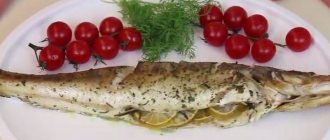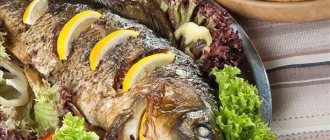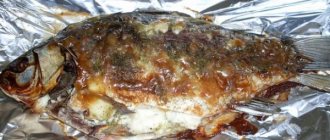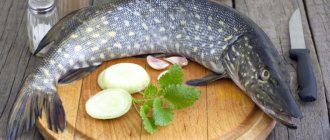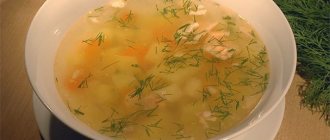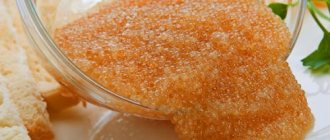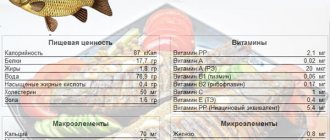For many, halibut is a delicious fish and a gourmet snack. Everyone knows that this is one of the most valuable commercial species used for food. And very little is known about the life of halibut in the ocean. We invite you to plunge into their mysterious world. Only the most interesting little-known facts!
What kind of fish, where is it found, description
In halibut, like flounder, the left side of the body is also the belly. On it, halibut can rest on the bottom of the sea. The fish's eyes are shifted to the right. They are located one above the other.
The mouth of the sea creature is also shifted to the right. The size of a given fish depends on its species. There are individuals that are no more than 50 centimeters long, but there are also those that grow up to 5 meters in length.
A small specimen weighs approximately 3 kilograms, and large ones can weigh up to 300 kilograms. The Atlantic halibut, which is listed in the Red Book, can reach such gigantic sizes.
Halibut is characterized by a variety of colors. But more often there is an olive or brown tint. The belly of the fish is light.
Halibut is a predator; the fish has two rows of teeth. Halibut usually hunt for capelin, cod, and herring. The fish lives in the Seas of Okhotsk, Bering, Japan and Barents.
The predator loves to hide on the sandy bottom. In summer, fish may move to mid-water. The lifespan of halibut is about 35 years.
Habitats and types of halibut
This representative of the flounder family lives exclusively in the clean and cool water of the Atlantic, the Pacific North, and the marginal seas of the Arctic Ocean. In Russia, halibut fish is represented by all five species existing in nature. This became possible due to the enormous extent of territorial waters along the northern and eastern borders of the country. In addition, halibut-shaped flounders (narrow-toothed, northern) swim off the Kamchatka coast, which are similar to the original both in appearance and in lifestyle, but are significantly inferior in size: they grow to 1.2-1.8 kg with a height of 52-58 cm.
To learn more:
Varieties of perch: description, habitats and habits
Halibuts
The genus consists of two species, which determine the maximum possible size of the entire family and are extremely valuable for fishing. 100 g of meat contains up to 1 g of polyunsaturated fatty acids Omega-3, glutamic, aspartic acids and other substances beneficial to the body:
- potassium (528 mg), phosphorus (287 mg), selenium (55.4 μg);
- vitamins D (231 mcg), A (24 mcg), B9 (14 mcg) and PP (12.6 mg);
- ash (1.6 g), proteins (18.6 g), healthy cholesterol (60 mg).
The total calorie content is only 103-142 kcal, which, combined with a low fat content (up to 4.8%), makes the product dietary and easily digestible.
Pacific and Atlantic halibut
The largest species is the Pacific halibut (lat. Hippoglossus stenolepis), which is capable of growing more than 4.5 m in length and gaining a weight of over 3.5 centners. It lives at depths of up to 1.2 km, preferring water with a temperature of +3-8C. The flat body is diamond-shaped and colored brown or greenish-gray with randomly scattered dull or contrasting spots. The wide mouth is equipped with many large sharp teeth, which are unevenly distributed between the lower (1 row) and upper (2 rows) jaws. In Russia, it lives in the waters of the Okhotsk and Bering seas. In catches it is usually represented by young animals weighing 3-6 kg.
Atlantic halibut (lat. Hippoglossus stenolepis) prefers greater depths of up to 2 km and can also reach a length of 4 meters or more. Its dark brown or gray eye side of the body is covered with large rounded scales (cycloid), each of which is surrounded by smaller plates along the perimeter. In the area of the pectoral fin, the lateral line forms a strongly curved arc. In Russia it is found in the White and Barents Seas and in the waters of the Arctic Ocean near Novaya Zemlya.
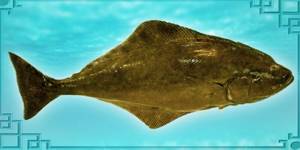
Arrowtooth halibuts
This genus also consists of two species, which are characterized by different scales. The ctenoid plates on the eye side have posterior edges with a spiny ridge of spines, which significantly increases the level of protection from predators (pollock, pollock, seal). The blind side is equipped with ordinary cycloid scales with rounded edges (75-110 in a row). There are two rows of pointed teeth on the upper and lower jaws.
To learn more:
Gudgeon: description of fish, habits and methods of fishing
The Asian arrowtooth halibut (lat. Atheresthes evermanni) is a schooling fish, lives 30-35 years and grows up to one meter with a weight of up to 9 kg. But individuals weighing 1.5-3.0 kg and 40-70 cm long are considered standard. The main color is grayish-brown, which is much lighter on the blind side. The large dorsal fin extends from head to tail. In Russia, it lives in the Seas of Japan, Okhotsk and Bering at depths from 25 to 2000 meters and leads a sedentary lifestyle. In summer it comes out into shallow water, in the cold season it moves into deeper layers.
The American arrow-toothed halibut (lat. Atheresthes stomias) lives no more than 25 years and is not inferior in size to its Asian relative. The maximum weight is recorded at 8.6 kg with a height of 84 cm. But in regular catches, the body length is 40-60 cm and the weight is 1.5-2.5 kg. It has a continuous straight lateral line and a combined scaly covering: the sighted side is ctenoid, the bottom side is cycloid. There are from 95 to 105 scales in a row.
A distinctive feature of this type of halibut is two nostrils with valves on each side, the upper eye extending beyond the edge of the head and a dark brown color. The blind side is lighter, with a purple tint. In Russia it lives in the Bering, Chukchi and Okhotsk seas.
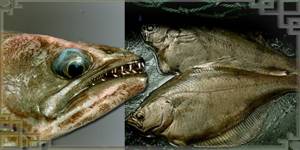
Arrowtooth halibut
Black halibuts
There is only one representative in the genus (lat. Reinhardtius hippoglossoides), which is characterized by fairly large size (up to 130 cm) and weight (over 40 kg). The catches are dominated by individuals 55-65 cm long and weighing 3-4 kg. It has a high limit of resistance to temperature fluctuations in the external environment and feels excellent in cold water down to –1.5 C, which allows it to live at depths of over 2000 m. This species is often called “blue-skinned halibut” for the color of its blind side in black and blue with silvery tint. The eye side has dark gray tones. In Russia, it lives off the coast of Kamchatka, Sakhalin, the Kuril Islands in the Bering and Okhotsk Seas.
To learn more:
Chekhon: description of fish and fishing methods
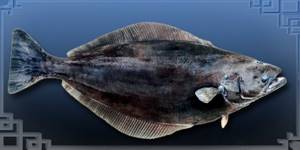
Composition and calorie content
The product contains a lot of microelements and vitamins that are important for the human body.
Among the list of these, the main ones can be noted:
- potassium, copper,
- sodium, magnesium,
- phosphorus, calcium,
- selenium, manganese,
- iodine, zinc,
- Vitamins A, B1, B2, B5, B6, B9, C, D, E, PP,
- Omega-3.
Fish meat contains protein and fats.
On a note! Using only 100 g. With the meat of this fish you will meet the daily requirement of the human body for Vitamin D.
The calorie content of halibut varies from 102 to 190 kilocalories per 100 grams of product.
Benefits and harms in diseases
Eating halibut can speed up the elimination of diseases and reduce the risk of transition of chronic pathologies to the acute stage. Features of the effect of fish on the body depending on the problem:
- Pancreatitis. The product helps improve the functioning of the gastrointestinal tract and accelerates the recovery of the inflamed pancreas. Use once a week. Steam, boil, simmer. Smoked and fried products are contraindicated as they cause an exacerbation of the disease.
- Hypertension. Fish contains vitamins and minerals necessary for people with heart pathologies. For example, phosphorus helps reduce blood pressure. Calcium prevents the development of stroke. Riboflavin improves oxygen supply to the heart. Boiled halibut is useful for the patient. Fried, salted and smoked foods are contraindicated because they retain fluid in the body, increase cholesterol levels, and provoke a hypertensive crisis.
- Diabetes. Fish contains protein, which promotes the production of insulin and also helps a person replenish vitamins and microelements. Diabetics can eat up to 150 grams of boiled, baked or steamed halibut at one time. You should choose the white-barked species, since Greenland individuals exceed the fat content limit allowed for diabetes and cause an exacerbation of concomitant pathologies.
- Gout. Halibut helps relieve joint inflammation and strengthens the immune system. If you get sick, you need to monitor the amount of purines you consume, so eat up to 100 grams of fish per week. Exceeding the dose will increase pain and worsen kidney condition.
Benefits and beneficial properties
1. Fish contains nutrients. They help a person improve their health and overcome certain ailments.
2. Doctors say that consuming the meat of this fish reduces cholesterol levels.
3. A person whose menu includes halibut dishes is less likely to suffer from cardiovascular diseases.
4. The functioning of the brain and nervous system also improves significantly.
5. The product breaks down fat deposits.
6. Scientists say it has an anti-inflammatory effect.
7. It must be eaten to strengthen the bone skeleton and teeth, improve visual acuity, and remove waste and toxins.
8. If you eat fish meat systematically, you will reduce the likelihood of cancer.
When losing weight
Every time during a diet, the human body experiences stress.
This means that the body does not receive the substances it needs that are needed for normal functioning.
Thus, a person losing weight should eat halibut meat. The product will compensate for the lack of vitamins.
Fish normalizes the functioning of the digestive system and satisfies hunger. But for people who are on a diet, it is better not to eat such fried fish. The fact is that the fish accumulates oil.
This means that the calorie content of the product increases. It is optimal to eat baked or boiled fish. If you eat halibut 1-2 times a week, it will help you lose extra pounds without harming your body.
Harm to halibut
There are several reasons why eating halibut is prohibited:
- personal intolerance;
- allergic reaction;
- hepatitis;
- pregnancy (such types of fish are likely to contain mercury).
Halibut contains naturally occurring substances called purines. This substance, breaking down into uric acid, causes gout and the formation of kidney stones.
In all other cases, halibut, on the contrary, is very useful, including for children.
Calorie content of caviar
The calorie content of caviar is 107 kilocalories per 100 grams.
1. We can say that this product is dietary and useful for the nutrition of people of almost all ages.
2. Caviar prevents the development of atherosclerosis. The product improves the functioning of the cardiovascular system and has a positive effect on blood circulation.
3. Thanks to the consumption of caviar, you can prevent age-related brain problems, improve skin regeneration and strengthen nails.
4. It also boosts immunity and lowers cholesterol levels. The product prevents the development of cancer.
But it also has a number of contraindications:
For example, it cannot be included in the menu if you have an individual intolerance or allergy to seafood. Eat caviar with caution if you have hypertension, hypotension, or kidney disease.
The product should not be given to children under 3 years of age. It is advisable to avoid eating caviar during pregnancy and breastfeeding.
How to distinguish real caviar from fake
Halibut caviar is beige in color. If the store has a black or red product, then it is better to refuse it. Most likely, this product is of poor quality.
The black color of caviar is obtained by tinting it with squid ink. But natural ingredients are not always used when dyeing, so such caviar can cause considerable harm to your health!
Real caviar has a film that covers the eggs. It is white or beige. Caviar should have a fresh aroma and taste of the sea. If the product has a muddy taste, then it is most likely pike or pike perch caviar, which is sold as the real thing.
The eggs are slightly smaller in size than salmon eggs, but they are just as elastic.
It is recommended to purchase the product in tins and accurately labeled. The jar must be undamaged with a clear pattern. In terms of price, this caviar is slightly cheaper than red caviar. If there is really a big difference, then it is better to refuse the purchase.

Real, undyed halibut caviar
How to choose and store halibut
In order for halibut to bring maximum benefits to the human body, you need to choose the right fish. When buying a whole fish, its body must be under the ice.
If you buy fillets, the pieces should be on top of the ice layer. Ideally, the carcass is elastic. If you lightly press it with your finger, the product will quickly return to its original appearance.
The scales of fresh halibut are moist and the gills are red. Be sure to look into the eyes of the fish. If they are cloudy, the product is of poor quality. Halibut exudes a clean sea odor; it does not smell like mud or ammonia.
Halibut is problematic to store, so it is better to process and eat the fish immediately. However, if it is impossible to immediately prepare halibut dishes, the carcass is washed in cold water and dried with paper towels.
Place the fish in a deep container and fill the container with crushed ice. The container is then wrapped in cling film. In this form it can be stored for up to 48 hours. Fish can be stored in the freezer for up to 4 months.
Halibut is baked, fried, boiled, grilled, stewed
Description of the arrowtooth halibut
Appearance
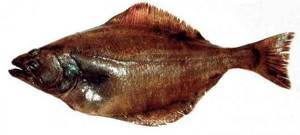
The fish grows in length up to 50-70 centimeters, while gaining weight from 1 to 3 kilograms. Therefore, it is considered one of the small representatives of the halibut. There are, but very rarely, individuals weighing up to 8 kilograms and up to 1 meter long.
Arrowtooth halibut can live about 30 years, which is not so short for such a fish. The body of halibut is elongated, covered with small but numerous scales. This fish is distinguished by the presence of arrow-shaped teeth. The part of the body where the eyes are located has a brownish-grayish tint.
The arrow-toothed halibut can be easily distinguished from its relatives by one feature: the upper eye is located so that it does not lie on the upper edge of the head.
Where does this fish live?
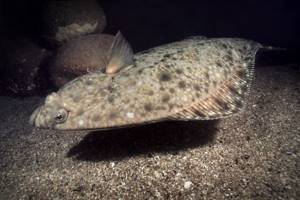
This type of fish is found in the Pacific Ocean and only in the northern hemisphere.
Its main habitats are:
- East coast of the Japanese islands.
- Japanese Sea.
- Sea of Okhotsk.
- Coast of Kamchatka.
- Bering Sea.
- Barencevo sea.
How does it reproduce
Only in the 7-9th year is halibut ready for reproduction. Spawning takes place exclusively at the depths of the Barents and Okhotsk seas; by this time the water should have a temperature of 2 to 10 degrees.
Each female is capable of laying from several hundred thousand to 3 million eggs. From the moment the eggs are laid until the fry appear, up to 2 weeks pass.
What does halibut eat?
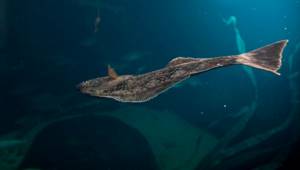
Arrowtooth halibut is a predatory fish that feeds on living representatives of the underwater world. For example:
- Small pollock.
- Shrimp.
- Squid.
- Euphrausids.
- Octopuses.
In turn, a variety of predators feed on arrowtooth halibut. The hatched halibut fry are the source of food for other fish species.
Behavior
Arrowtooth halibut is a fish that lives in small schools. At the same time, fish can be found at depths from 70 to 1.5 thousand meters. Selects places where the bottom is strewn with stones, sand or silt. This is what concerns large specimens. As for small specimens, they prefer much shallower depths.
This type of fish does not travel long distances. With the onset of cold weather, fish move to depths where the temperature regime is stable. With the arrival of spring and then summer, halibut rises from the depths and stays closer to the surface until it gets colder.
Fishing
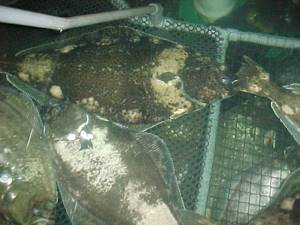
This type of fish is of interest to fishermen because it is considered a valuable fish. To catch arrowtooth halibut, which can be found at considerable depths, fishermen use deep-sea gear. In addition, halibut, especially recently, has attracted the interest of fishing enthusiasts.
How to cook deliciously
This fish can be prepared in a variety of ways. For example, it is baked, fried, boiled, grilled and stewed.
Culinary experts say that fish will be juicy and aromatic if it is rolled in breadcrumbs or flour. Halibut can be combined with other seafood, such as shrimp or squid.
Such fish dishes are often prepared even with the addition of mushrooms. For cooking, you can use any equipment - barbecue, stove, double boiler, multicooker.
Halibut can also be served as an independent dish or served with a side dish. As a side dish you can take potatoes, vegetables or boiled rice.
How and where to catch halibut
Commercial catch of flounder fish is carried out using gill nets, trawls, bottom longlines and seines. In order not to harm the population, a non-spawning period is selected from June to October. During the same time frame, you can individually catch halibut in the Barents Sea and other marginal waters of the Arctic Ocean. For fishing, it is best to use a specially equipped boat, which will provide optimal conditions for actively searching for bottom fish.
To learn more:
Vobla - what kind of fish, description and way of life

The gear usually chosen is a powerful short spinning rod with a multiplier reel, on which 300-350 meters of strong cord are wound. The bait is rotating spoons (jigs) or jig heads weighing from 100 g with additionally attached edible silicone, a piece of fish or live bait 15-20 cm long (cod, pollock, haddock).
Spinning fishing for halibut must be smooth and unhurried. The bait that has sunk to the bottom should be raised by 50-60 cm, dragged a few meters and lowered again as much as possible. The fisherman must avoid sudden jerks with the rod so as not to spook the fish. A confident and strong bite usually follows when the bait lifts off the bottom. Another effective tackle is a simple donka with live bait or a piece of fish fillet attached to a hook.
Places with moderate currents and depths of 30-100 meters deserve special attention. Here you can effectively implement silent trolling from a drifting boat using a special device for deepening the bait - a downrigger.
Harm and contraindications
Unfortunately, in some cases, eating the meat and caviar of this fish can be harmful:
1. It should not be eaten by allergy sufferers, people with hepatitis, or those with stomach and intestinal ailments in the acute phase.
2. Eat fish with caution during pregnancy and lactation.
3. If you have a history of hypertension, liver or kidney diseases, then before introducing fish into the menu, you should consult your doctor.
4. Meals should be prepared only from fresh ingredients. Spoiled fish inevitably leads to poisoning.
5. Be careful, as the meat of this fish can accumulate mercury, which can negatively affect your health.
